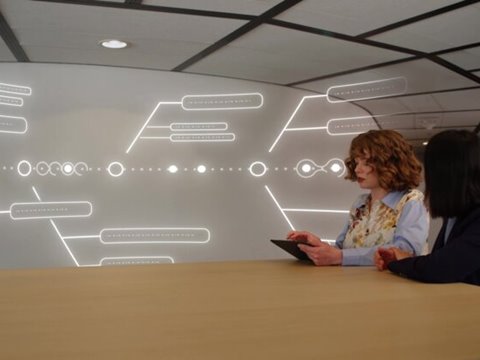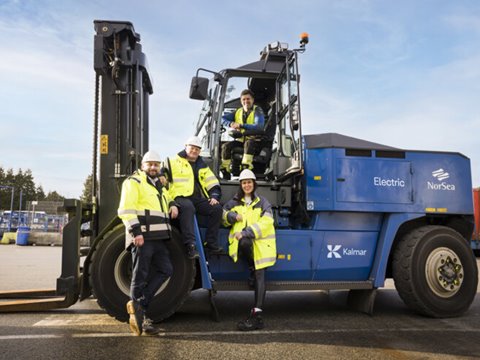
Safety first in mixed-traffic operations
With automation rapidly becoming the norm rather than the exception, container terminals are looking for safe solutions for mixed traffic where people and manual equipment work alongside automated machines. How can we make sure that everything runs smoothly and safely?
For many container terminals, when it comes to automation it’s no longer a case of “if”, but “when”. Although automated container terminals have been with us for a few decades already, interacting with automated equipment is still a new concept for many people.
The robots are coming
At a terminal, automated equipment usually operates within a closed area, isolated behind physical barriers and gates. Access-control systems designed and built according to well-defined industrial safety standards ensure that automated and manual equipment do not mix. This situation, where automated equipment is firmly locked away in its own special area, is all well and good when we’re talking about a greenfield terminal where automation has been on the agenda from day one.
But how can brownfield terminals start their automation journey without disrupting their ongoing operations? They can’t simply conjure up a new piece of land or rip up expensive infrastructure to make way for a dedicated area for automated equipment.
Essentially, there are two options: the ‘big bang’ approach or the phased approach. In the former, the whole terminal shuts down in order to convert to automated operations. This is basically the same as starting from scratch with a greenfield project – i.e. it’s expensive and time consuming. In a phased implementation, the terminal can gradually automate selected parts of its operations at its own pace. Typical approaches include automating the terminal berth by berth, or automating the storage area first while continuing with manual operations in the quay area.
From physical to virtual isolation
But a phased approach isn’t without its potential challenges, unless construction is very carefully planned and executed. There could be construction work ongoing for several months, or even years, at various locations around the terminal. Fences, gates and other infrastructure can be hard to fit into the jigsaw puzzle that is a modern container terminal – especially when many terminals have a limited footprint that simply cannot be extended. Machines and people have to work around these construction areas, which can disrupt operations.
The trend is towards fully mixed operations with manual and automated equipment operating side by side without any form of isolation.
But we’re not quite there yet. The first step on this journey will be the introduction of virtual isolation. This will perform the same safety functions as physical isolation, i.e. keeping the machine in the isolated area and keeping people away from the automated movement without the need for actual barriers, gates and other infrastructure. In this approach, automated machines follow the guidance provided by the virtual technologies – which could be based on things like a local satellite system, or ground-based transponders set into the asphalt to form ‘lanes’ – while manually operated machines continue to follow standard road markings and traffic lights.
Bringing down the barriers
To make a parallel with our everyday lives, think autonomous cars. Despite the huge progress they have made, they’re still a long way from being a commercial reality, with manufacturers still grappling with how to ensure safe and consistent operation in the infinitely variable open environment of road traffic. While an automated terminal is a much more controlled environment than a public highway, there are still challenges to face when shifting from an isolated to a mixed-traffic model, not least the steep learning curve for terminal operators.
Mixed-traffic operations enable a high degree of flexibility for terminals by introducing the possibility to mix road operation and terminal operation in one highly efficient whole. Who knows, it could transform quayside terminal operations forever by doing away with the need for a yard. Whatever happens, ensuring safety remains the number one priority.
Ville-Pekka Kärki
Director, Automation,
Kalmar Automation Solutions
Related articles
Further reading
Subscribe and receive updates in your email
Subscribe













